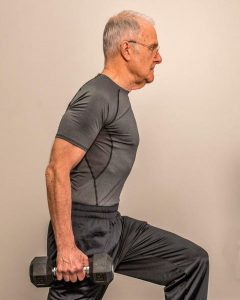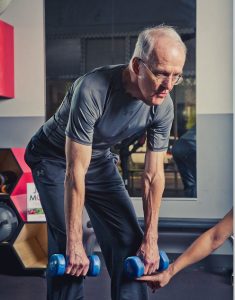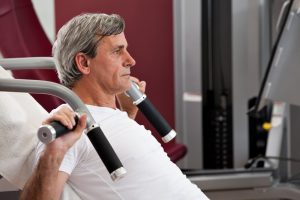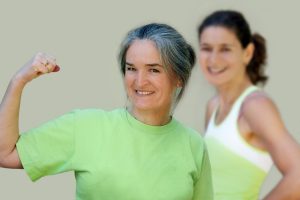Heads (and Chest) Up: The Easy Power Move Everyone Should Know
There’s one simple move that can instantly improve how you’re moving while helping you look and feel better, too. In fact, it’s so simple that it’s widely neglected. It requires no special gear. And you can do it standing or sitting just about anywhere.
The secret is…Lift your chest.
Stand up straight and really lift that chest, so your shoulder blades come together behind you, your shoulders are pulled back, and your arms are hanging loosely by your sides. No leaning back! Your feet should be at about hip width and pointing straight ahead.

A whole-body realignment
Notice what happens right away:
Your gluteal, thigh, and calf muscles tighten, and your tummy flattens. In fact, your entire core engages.
Your back moves toward its natural, S-curved shape, and your whole body is more aligned.
Your hips open, and your pelvis is appropriately aligned and “tucked,” rather than tilting forward.
Your chest cavity opens, too, giving your lungs room to inflate more fully.
You stand measurably taller, gaining as much as an inch or more in height.
Make it a habit
Now try to keep your chest lifted as you walk or move. If you tend to carry your head forward, think about keeping your neck back and your chin up, so you’re looking straight ahead (imagine an invisible string that is pulling you up from the ceiling through your spine, neck and head).
This is what good posture looks like! Learn how to “stand proud,” and you’ll engage those important core muscles a lot more often. Make it a habit, and you will be less likely to stress your knees, hips, back, or shoulders while lifting or turning. You’ll also feel stronger, more confident, and more in command. So if you want to be fit, “just move”—and lift that chest while doing it.
Image: Havey Productions
 gives me a time and place to focus on improving how I move. It’s like a laboratory where you gain insight into your strengths and weaknesses and figure out what your body needs in order to be more balanced and functional. (Ideally, you do this with the help of a skilled trainer who brings expert knowledge and an objective eye to the effort.) That work continues outside the gym. As you improve your patterns of movement in your workouts, you can apply that learning to all your other activities. Over time, those new and better ways of moving become embedded in your muscle memory.
gives me a time and place to focus on improving how I move. It’s like a laboratory where you gain insight into your strengths and weaknesses and figure out what your body needs in order to be more balanced and functional. (Ideally, you do this with the help of a skilled trainer who brings expert knowledge and an objective eye to the effort.) That work continues outside the gym. As you improve your patterns of movement in your workouts, you can apply that learning to all your other activities. Over time, those new and better ways of moving become embedded in your muscle memory.


